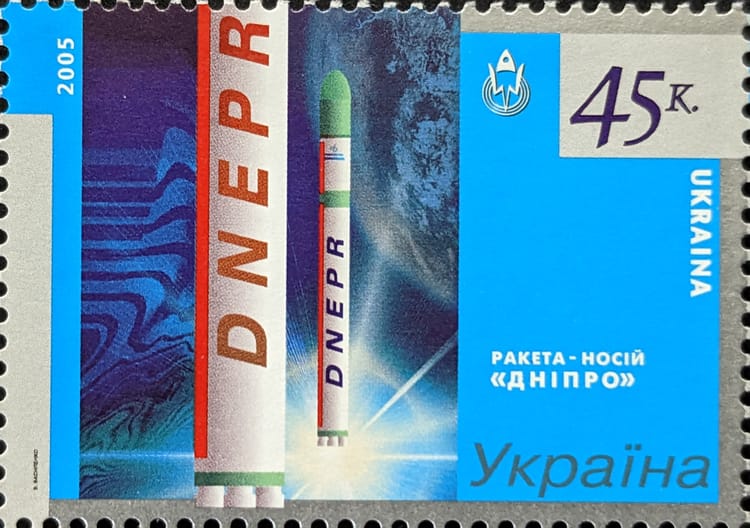Lessons Not Learned, Part Deux
While the first "Lessons Not Learned" analyzed the Space Development Agency's likelihood of achieving its proposed "Space Transport Architecture" on time and on budget, the subject of this analysis was instigated from another Government Accountability Office (GAO) report recently released focusing on the United States Air Force's (USAF) Space and Missile Systems Center’s (SMC) efforts to acquire a new series of missile launch detection satellites, typically using infrared sensors to detect those launches, for Space Force operators.
Earlier USAF missile launch detection constellations were the Defense Support Program (DSP) and the Space Based Infrared System (SBIRS). These particular types of infrared satellites fall into the Earth observation and remote sensing categories. By mission segment in the space industry, these are satellites with a military mission, supporting terrestrial operations, primarily as an early warning capability for U.S. military forces (so they can counterstrike before being hit) and politicians (so they can, um, run the war from "alternate locations"). Russia has a space based early warning system as well--Tundra. There were a few years when it did not have any space based early warning system.
Back to the report.
Within that GAO report lay an outcome from SMC’s current acquisitions efforts concerning the Next-Generation Overhead Persistent Infrared (Next-Gen OPIR) program: the new satellites’ most critical part--the ground system--will probably not be ready by the time the first Next-Gen OPIR satellite will be deployed in orbit. From a Parabolic Arc post (the GAO database seems to be in the middle of an update this weekend):
The ground systems required to handle the new satellites might not be ready when the first GEO spacecraft is delivered.“To mitigate this risk in the interim and ensure a ground system is available for the first launch, the program is designing GEO satellites to integrate into existing SBIRS ground architecture with some modifications,” GAO said.
This is not new
To be clear, a satellite ground system is nothing new to the space industry in general and the USAF in particular. Satellites orbiting the Earth need a way to receive commands, respond, and then transmit data, such as data generated by whatever an infrared payload witnessed and collected.
In the commercial space industry sector, ground systems are important enough and growing fast enough that some big commercial companies like Amazon are providing a ground system for customers. Companies like SSC, who have made a business of leasing time on satellite communications terminals located around the world, are building out their remote terminals to supply more capability to a growing customer base.
Even SpaceX, a launch service provider, is beginning to understand just how much more of a role the ground system must play for Starlink. While it’s been a potential Achilles-heel for the planned LEO broadband constellation for some time, this recent quote shows just how irksome Musk is finding this challenge (in which user terminals play a key part):
"The fully considered cost of the user terminal is ... the hardest challenge for Starlink," Musk told Aviation Week, but added: "I think we've got a strategy where success is one of the possible outcomes."--Dave Mosher, Business Insider
(It sounds like the company is getting close--at least on the user-terminal functionality side. Notice the article doesn't address terminal cost.)
A satellite ground system is important. There’s nothing new about this.
“Groundhog Day”--without learning
Also not new is SMC, the USAF’s center that is specifically in place to buy satellite systems for the USAF’s, and now SF’s, space operators. The organization has a history in USAF acquisitions that stretches back nearly 65 years. SMC put out the linked Youtube video, entitling it “60 Years of Excellence” (it was posted five years ago).
But is a history of acquisitions excellence represented when a basic and very necessary requirement--a satellite ground system--will not be ready when the satellite that needs it is deployed? Is it acquisitions excellence when the organization has to spend more money to ensure the newest satellites will also be able to talk with an older ground system architecture--because the new one won’t be ready? Is it an example of acquisitions excellence when the organization repeats the same fundamental error for a third or even “nth” time?
Yes--that’s correct--this is not SMC’s first time in having a satellite constellation’s ground system go into operations AFTER the satellites themselves have been deployed. Before the GAO’s report concerning Next-Gen OPIR, the organization had most recently had problems with getting its Global Positioning System (GPS) Next-Generation ground control system (GPS-OCX). The GAO also wrote that up in 2013 (page 72):
Air Force officials recently stated that, although GPS III is still maintaining an April 2014 "available for launch" date for the first satellite, the planned launch date is being moved to May 2015 in order to synchronize it with the availability of the GPS Operational Control Segment (OCX) Block 0, without which the satellites cannot be launched and checked out.
Like SMC’s latest program, Next-Gen OPIR, GPS-OCX was not ready when the newest iteration of GPS satellites was ready to be deployed. It wasn’t ready even after the satellite deployments themselves were delayed three years after the launch move to 2015 mentioned in that quote.
Similarly, and closer to Next-Gen OPIR’s turf, SBIRS had issues with ground system rollout as well. It, too, was not ready until after the first for SBIRS satellites had been deployed. And these aren’t the only satellite systems SMC has worked with.
These delays have, of course, meant these systems become more expensive over time. The SBIRS program is one of SMC’s most excellent examples of this unanticipated cost growth. Rand has a chart showing this growth (although, as noted in another analysis, “Based in Fiction: A Closer Look at a Heavy-Lift Market Report,” some of that organization’s assumptions and research methodologies need to be scrutinized). From its “Acquisitions of Space Systems” report, page 8:

Yes--that 2012 number is more than seven times higher than the initial 1996 SBIRS estimate.
The GAO’s latest report makes it appear as if SMC is going through its own acquisitions “Groundhog Day.” Only, unlike Bill Murray’s character, it’s not remembering anything (at least anything useful) from the last two decades. It appears that an organization dedicated to acquiring space systems, including critical satellite constellations, is constantly underestimating system costs and schedules, which then leads to longer deployment times and higher costs, including delaying critical ground system infrastructures past the point of satellite deployments.
Process and Culture Problems
Based on the fact that these systems' developments--as well as their corresponding issues--and deployments span decades of time, no single person is responsible for the recurring ground system delays with each program.
Instead, it appears SMC’s culprits might be its processes and culture. The culture problem was noted in “Military Milestones, Costs, and Culture:” Too many people are involved, seemingly too invested in the current way SMC acquires space systems (even if it’s now embracing SMC 2.0). This culture, according to SMC, has around 6,300 people working in it.
SMC is considered a sub-unit of the U.S. Space Force, which means those 6,300 people are considered part of National Security Space for the USAF. From the Space Foundation’s “The Space Report 2018, Q1” there were over 11,500 people--operators, civilians, etc.--in the USAF’s space workforce at the beginning of 2018. At that time SMC’s workforce was larger than half of the USAF’s space force. It probably still is.
That’s a lot of culture to push against. Culture has a lot of inertia. Culture impacts processes. The process is entwined with culture. It imbues its members with what it considers as an acceptable risk for buying and building space systems.
Process, because of culture, protects the 6,300 from external feedback resulting from Nunn-McCurdy breaches, GAO reports, Congressional inquiries. While a few examples to the contrary may exist, there appears to be very little accountability--by design. The systems SMC works with are considered indispensable to national security, which typically means in spite of much negative feedback from politicians and plenty of reports advising change, SMC still receives money for its projects and schedule extensions.
A similar rationale and corresponding process apply if an SMC project’s prime contractor doesn’t meet requirements such as schedule or budget. There are very few companies involved in these projects who can do things like build exquisitely expensive infrared sensors while updating risk matrices. National security makes it simple to justify continued work with such underperforming companies endowed with singular technological prowess while failing to meet contract requirements. The only pain is more government vigilance--while receiving more money and schedule extensions.
Receiving more money typically amounts to billions of dollars when looking at these programs in aggregate, the unclassified portion of Department of Defense (DoD) space spending (of which the USAF spends the most), includes acquisition programs for Next-Gen OPIR, SBIRS, GPS, etc. The amount for 2018, according to The Space Report 2018, Q1, was slightly above $11 billion--not quite half of all estimated DoD space spending for that year, but close. SMC controls a lot of that money, theoretically wielding fiscal responsibility for programs it oversees.
Between its workforce and its big budget, SMC's control of the USAF's/SF's future is shocking--and based on its performance history, it's disturbing. SMC is not learning from its troubled program management history based on the latest GAO report. Even after nearly 65 years of doing this type of work. Even though ground systems are basic but critical infrastructure for satellite operations. Especially after the specific ground system challenges it’s faced with other programs.
There don't appear to be simple answers as to how to fix these issues (other than a wholesale removal of SMC--perhaps a defunding?). It’s obvious SMC has not yet discovered a solution. Its latest approach still seems unsustainable.
But so did the previous satellite programs. Indicating that SMC isn’t the only one not learning lessons.




Comments ()